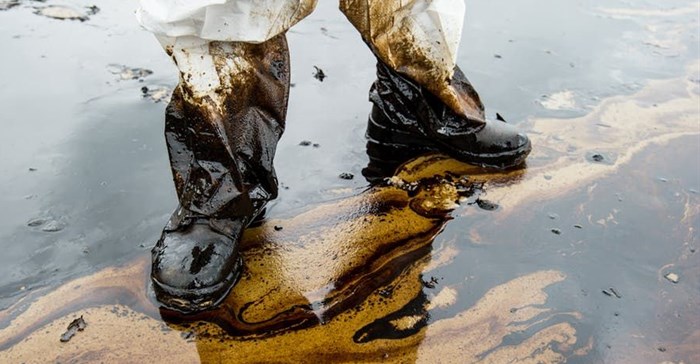






While commercial production is a few years away, there’s growing concern that Kenya isn’t ready for the environmental, health and safety risks that accompany oil production.
A recent forum involving key stakeholders – community, civil society organisations and the Ministry of Health – outlined some of these concerns. These
include that; workers aren’t well protected, waste isn’t being well disposed of and water sources could be contaminated. Other problems identified included the fact that those regulating these issues don’t have clear mandates and that policies and standards that deal with managing risks don’t exist or aren’t clear.
Kenya has several state agencies that try to regulate the industry. This means that there’s an uncoordinated approach and a great deal of uncertainty. A framework is needed that speaks specifically to environment, health and safety for the oil sector. It must have a clear division of roles and responsibilities, ensuring the sector is efficient, and encouraging investment.
A key concern for communities in the Turkana area is how waste and pollution will be managed. This includes; the disposal of drill cuttings, reduced air quality due to flaring of gas and negative impacts on human and animal health.
There’s also concern over the technology used to handle hazardous waste as it doesn’t meet the standards of those in other countries. For instance, most waste oil treatment facilities don’t meet international standards and are run by the informal sector.
Trying to deal with these risks is challenging and there are significant gaps in policies and laws.
For example, there’s a general requirement that contractors be prepared in case of an emergency – like a fire. But there’s no direction of who is responsible for what and the procedures that must be followed. Kenya’s National oil Spill Contingency Plan is meant to make this clearer, but it has been in draft form for over four years.
There also needs to be clarity on who is responsible for damage incurred as a result of oil spills or other pollution. Currently the Kenya Maritime Authority is responsible for coordinating this, but they are a maritime agency – authority should rest with the National Environment Management Authority.
There also need to be more policies that protect the health and safety of workers. An occupational safety and health act in on the statute books. But there are no policy guidelines that look at how health and safety is monitored. These are needed to govern the industry’s hazardous work operations like; rigging safety, flaring of gas, drilling or chemicals handling.
Policies should be created by the Ministry of Petroleum and Mining in collaboration with the other relevant ministries – like environment and health.
Other policies that need to be reviewed include those related to reducing the risk of fires – current legislation only deals with small workplace fires – and those related to first aid.
Regulations must also be drawn up to cover community health and safety. These don’t exist yet the impact of oil and gas operations goes beyond the workplace.
Finally, there are not enough health facilities and emergency service providers should accidents occur.
Three key bodies are meant to regulate environment, health and safety issues in the sector. These are the Energy and Regulatory Commission; the Directorate of Safety and Health Services and the National Environmental Management Authority. But their activities aren’t coordinated. This means that companies aren’t being held to proper enforcement and compliance regulations.
Regulations can also clash. For instance, the occupational safety and health laws require workplaces that use or produce toxic substances to ensure they’re safely collected, recycled or disposed of. But there isn’t currently a body that can actually process waste coming from the oil and gas sector. The closest facility is in Uganda.
There are attempts to improve on policy. Kenya’s occupational safety and health act, for example, is under review. But it’s not easy.
Developing policies, and ensuring they’re adhered to, is a major challenge as government regulatory bodies lack skills and manpower. The Directorate of Safety and Health Services, for instance, has 71 professional officers to inspect about 140,000 workplaces. This is a huge challenge for inspectors working in the remote areas where oil exploration is taking place. They can take one to two years before they visit, leaving most workers exposed to hazards.
The goods news is that steps are being taken. the environmental and occupational health and safety policies are under review by two different set of consultants to establish more robust policies and guidelines.
Legally, efforts are also being taken to coordinate an approach. The new bill is being considered by the Senate. Among other things it proposes a new Energy and Petroleum Regulatory Authority.
Over the last three years, a technical assistance project has also trained 220 government officers in lead agencies responsible for enforcement of environment, health and safety regulations.
These developments are all encouraging. But it’s important that policymakers don’t adopt a one-size-fits-all approach but rather develop methods that adequately address the specific needs and priorities of the oil industry and the risks it brings.
Laura Muniafu, of Strathmore University’s Extractives Baraza, assisted in the writing of this article
This article is republished from The Conversation under a Creative Commons license. Read the original article.![]()

The Conversation Africa is an independent source of news and views from the academic and research community. Its aim is to promote better understanding of current affairs and complex issues, and allow for a better quality of public discourse and conversation.
Go to: https://theconversation.com/africa